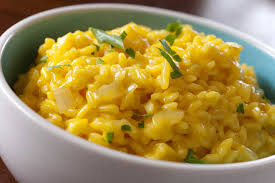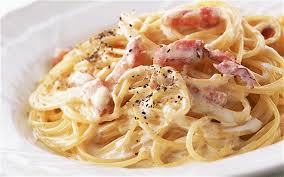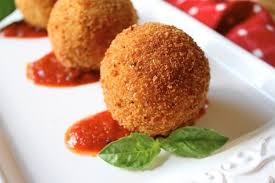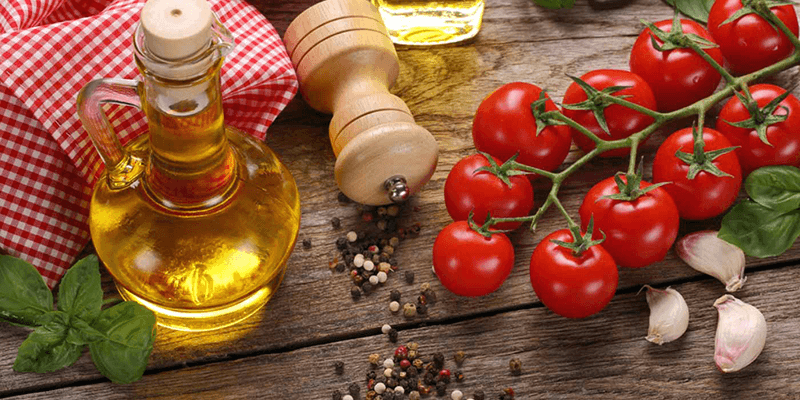Authentic Regional Italian Cuisine or American-Italian Cuisine? You Decide!
When thinking of Italian cuisine, one may think of hearty soups and even heartier plates of pasta. However, the varying regions in Italy offer a variety of specialty foods that are highly dependent on their climate and local culture. Some of the broader distinctions include the types of fats used, the production method and shape of their pasta, what vegetables thrive and how much foreign influence there is in that particular area. One glaring truth, however, is that authentic Italian food is not what we find in America.
 Northern Italy‘s climate is more suited for cattle than olive production, and so the cuisine there is rich in butter, beef and pork. Their food is often braised and stewed with a wine base; cooks use much less tomato than their southern neighbors. Risotto and polenta are standard staples and winters bring elaborate and fulfilling soups to the table. The inner waterways provide an abundance of freshwater fish and fowl, and the coasts offer up seafood such as eel, clams and mussels. Some favorite recipes of the North are ravioli in Barbera wine, veal Parmesan, and hearty fish stews like ciuppin served with a firm and crusty bread. Many feature the Formaggio d’alpeggio and fontina cheeses native to the region.
Northern Italy‘s climate is more suited for cattle than olive production, and so the cuisine there is rich in butter, beef and pork. Their food is often braised and stewed with a wine base; cooks use much less tomato than their southern neighbors. Risotto and polenta are standard staples and winters bring elaborate and fulfilling soups to the table. The inner waterways provide an abundance of freshwater fish and fowl, and the coasts offer up seafood such as eel, clams and mussels. Some favorite recipes of the North are ravioli in Barbera wine, veal Parmesan, and hearty fish stews like ciuppin served with a firm and crusty bread. Many feature the Formaggio d’alpeggio and fontina cheeses native to the region.
 In Central Italy, the Italian cuisine, because of the warmer weather, provides an abundance of crops, so tomato-based dishes are more popular than in the North. The chillier inland winter weather makes it possible to grow leafy greens such as black leaf kale, and it is from this region that the world gets luxurious saffron. The world-renowned Chianina cattle graze in Tuscany, as do chickens and pigs. As such, roasting meats is more prevalent than braising. Hard-to-grow crops are abundant there, such as the ancient grain farro, and the hills and mountains of Central Italy provide chestnuts. It is from there we get Pecorino (goat’s milk) cheese. Typical dishes include game sauce, the traditional bean soup known as Pasta e Fagioli, and spaghetti alla carbonara, a delicious recipe made with pancetta or guanciale (pig cheek, bacon is OK) and fresh egg.
In Central Italy, the Italian cuisine, because of the warmer weather, provides an abundance of crops, so tomato-based dishes are more popular than in the North. The chillier inland winter weather makes it possible to grow leafy greens such as black leaf kale, and it is from this region that the world gets luxurious saffron. The world-renowned Chianina cattle graze in Tuscany, as do chickens and pigs. As such, roasting meats is more prevalent than braising. Hard-to-grow crops are abundant there, such as the ancient grain farro, and the hills and mountains of Central Italy provide chestnuts. It is from there we get Pecorino (goat’s milk) cheese. Typical dishes include game sauce, the traditional bean soup known as Pasta e Fagioli, and spaghetti alla carbonara, a delicious recipe made with pancetta or guanciale (pig cheek, bacon is OK) and fresh egg.
 Southern Italy boasts summer crops of tomato and eggplant while winter yields cauliflower and broccoli rape. The region was traditionally the poorest of Italy, and the people subsisted mainly on grains, bread and vegetables. Dry pastas are more prevalent in this area because of the months being hotter than their Central and Northern neighbors. Shepherding is more commonplace than herding, so lamb is focused prominently. Even as much of the culture was poor, some of the most opulent and famous foods hail from this section of Italy. They brought the world pizza, durum wheat spaghetti, and many sauces we all have come to know and love. Wedding soup and lasagna with ricotta are also popular. Olive oil is the preferred fat while hot pepper is the main spice.
Southern Italy boasts summer crops of tomato and eggplant while winter yields cauliflower and broccoli rape. The region was traditionally the poorest of Italy, and the people subsisted mainly on grains, bread and vegetables. Dry pastas are more prevalent in this area because of the months being hotter than their Central and Northern neighbors. Shepherding is more commonplace than herding, so lamb is focused prominently. Even as much of the culture was poor, some of the most opulent and famous foods hail from this section of Italy. They brought the world pizza, durum wheat spaghetti, and many sauces we all have come to know and love. Wedding soup and lasagna with ricotta are also popular. Olive oil is the preferred fat while hot pepper is the main spice.

Sicily and Sardinia are Italy’s main islands, yet the only thing they share is Italy itself. Sicilian cuisine is the most eclectic of all, being influenced by all those who have sailed the Mediterranean; each introduced something new. Their cuisine varies; Messina and Trapani are abundant in fish, Palermo draws from the richness of the French that shines through in meat stews, and vegetables are main staples of Ragusa and Syracuse. Sardegna saw the sea as a threat from intruders and withdrew inland to thrive in shepherding and agriculture. Their recipes are laden with lamb and pig, with sheep or goat’s milk cheese often being featured.
Italian-American cuisine differs wildly from the rich cultural nuances of traditional Italian cuisine. Immigrants here were forced to use ingredients of this land, and so a hybrid cuisine was created. As you can see, authentic Italian food is not limited to pepperoni pizza, chicken Parmigiana or plain spaghetti. As opposed to marinara, a truer sauce is fresh tomato, basil and olive oil. Italian dressing is not authentic at all; salads should be dressed with vinegar, oil, salt and perhaps a touch of pepper. Mediterranean Bruschetta (pronounced “brusketta”) is the base recipe for our garlic bread and is a much better choice as a crusty and delicious side or appetizer.
In any Italian restaurant, one might order shrimp scampi, but this dish is one that is quintessentially fusion. Langoustines are small lobster-like crustaceans that Italians could not find in our waters, so they substituted shrimp. Butter is the fat instead of olive oil, and the smaller size of the seafood require linguine or angel hair for a more satisfying meal.
American versions of genuine Italian recipes may be a favorite here, but one travel to the homeland of origin would reveal glaring disparities. Enjoying ‘Italian’ food upon return to the States would never be the same.


